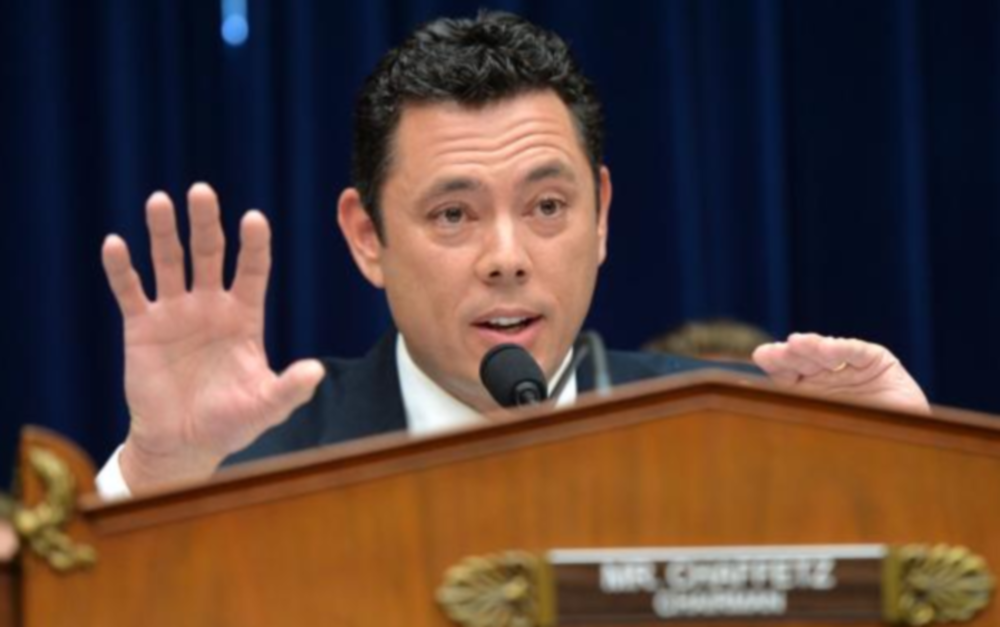Sen. Tom Carper and his quest for postal reform in 2016 found a willing partner in Rep. Jason Chaffetz—his postal governing counterpart in the House—raising mailers’ hopes that a bill could be passed if it side-stepped the controversial issue of rates.
A full bi-partisan complement of members questioned panelists at a hearing of the Utah Republican’s Government Oversight Committee. (On the Senate side, Carper and a band of fellow Dems are beating the reform drum.) Ranking Member Elijah Cummings (D-MD) appeared committed to push for a workable bill and Chaffetz said he’d issue a discussion draft soon and conduct a mark-up this year. Directing music to mailers’ ears, Chaffetz said he deemed raising rates while cutting services to be an unwise approach.
“Realizing that some issues remain highly polarizing, [we favor] limited postal reform,” commented American Catalog Mailers Association President Hamilton Davison in a statement issued after the hearing. “We would hope that those items generally acceptable to the majority of stakeholders can be expeditiously passed into legislation, while more controversial items remain on the table for further discussion and debate.”
In talks last year, mailers, postal unions, and the Postal Service reached consensus on several key reform components. Davison urged that any new legislation focus on these, which include integrating all pensioners into the Medicare system, ratcheting down USPS’s onerous prefunding requirements for retiree health care, and allowing the Postal Service to expand into additional business activities.
But, in the hearing, Postmaster General Megan Brennan insisted that legislation make permanent the 4.3% exigent surcharge and add $2 billion a year to the Postal Service’s top line. Confronted with Davison’s proposal, the Postal Service held firm.
“We also agree that the problem is solvable, and that the finances of the Postal Service can be stabilized with the enactment of the prudent legislation, but given our dire financial condition, now is not the time to tackle half the problem, or to take the path of least resistance,” the Postal Service’s wrote in response to a DMN query. “Instead, legislation must attack not only costs, but also revenue…by reinstating the exigent surcharge and giving us additional product flexibility to generate new revenue.”
Mailers are just as adamant that rates have no place in reform legislation, especially since the Postal Regulatory Commission (PRC) is about to embark on its mandated 10-year review of postal operations and will include rates in its assessment. The report will not be issued until early 2017.
“We’re trying to push for Congress to just take action on what needs to happen,” says Patrick Henderson, director of government affairs for Quad Graphics. “All the things we need in a bill to make it happen don’t have any controversy attached to them. There’s only one area that doesn’t need Congressional action, and that’s rates.”
Longtime mailers’ advocate Gene Del Polito, president of the Association for Postal Commerce, wondered if Brennan has further motivation in insisting on the permanent rate increase beyond the $2 billion. “The Congressional Budget Office only scores in [a bill’s] favor if it’s guaranteed by the money. They discount anything that’s not cash in hand,” he posited. “So maybe the Postal Service feels compelled to ask for the exigency back to get a positive score from CBO.”
That said, Del Polito observed that such a strategy is misguided in the long run, considering that rates is the PRC’s to handle. “If Congress were to do that it would seriously regret it later. The Postal Service has more than enough cash on hand to get through a period of revival, and it should then leave it up to the PRC to do its job.”
As always when the issue of rate increases arises, mailers question whether the Postal Service wants higher rates or more volume—about 80% of which they provide. “At least 15 billion pieces of mail were generated by nonprofits last year, and they’re very responsive to the price of postage,” said Stephen Kearney, executive director of the Alliance of Nonprofit Mailers. “Their mailings were down by 4.7% during exigency, very close to the 4.3% surcharge. With nonprofits, the budget is the budget.”
If big business mailers decrease mailing and heavy up on digital means due to higher rates, taxpayers will end up footing the bill for this constitutionally mandated service, said catalog advocate Davison. “A limited reform package, passed now, can have a significant positive impact,” he said. “To those who call for a reform bill that will last 20-plus years, we disagree. Technology is changing too rapidly to expect that Congress will not be required to keep up with changing circumstances.”
So it seems, new postal reform in 2016 ultimately lies in the hands of the Postmaster General. If Brennan and her Board of Governors (which at this point consists just of her, Deputy PMG Ron Stroman, and one other) could see fit to table rates and give their blessing to a modified bill, odds for passage would rise tremendously.
Word has it that the PMG cancelled an engagement today to tend to pressing business on the Hill. That could well mean a sit-down with Chaffetz and a hope for compromise. When it comes to postal affairs, anything can happen.







